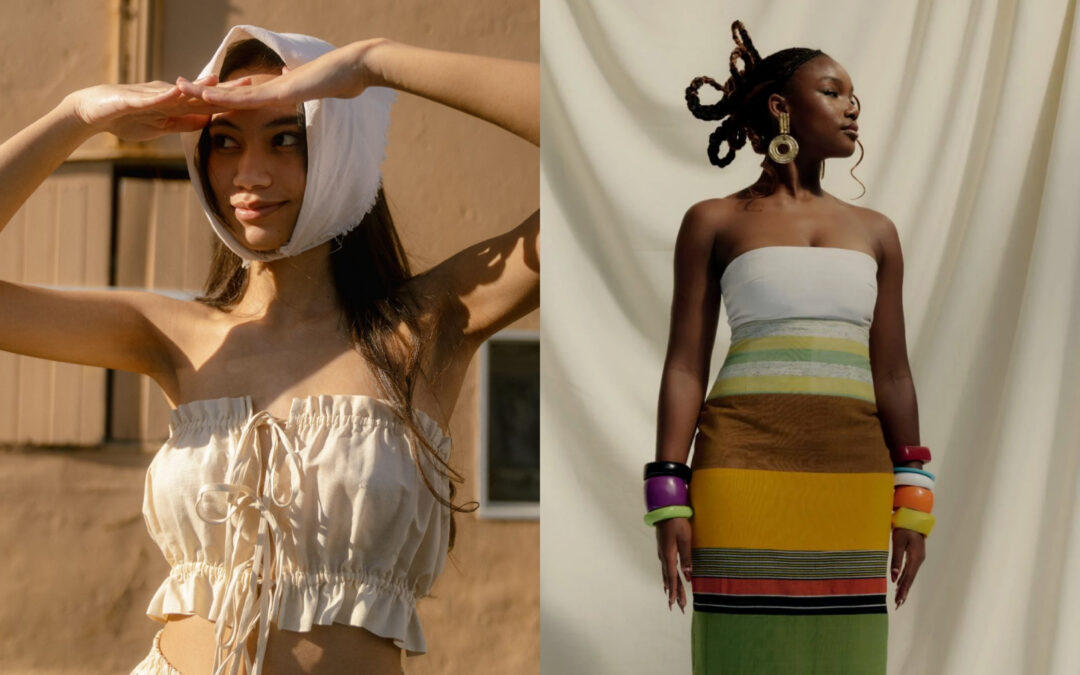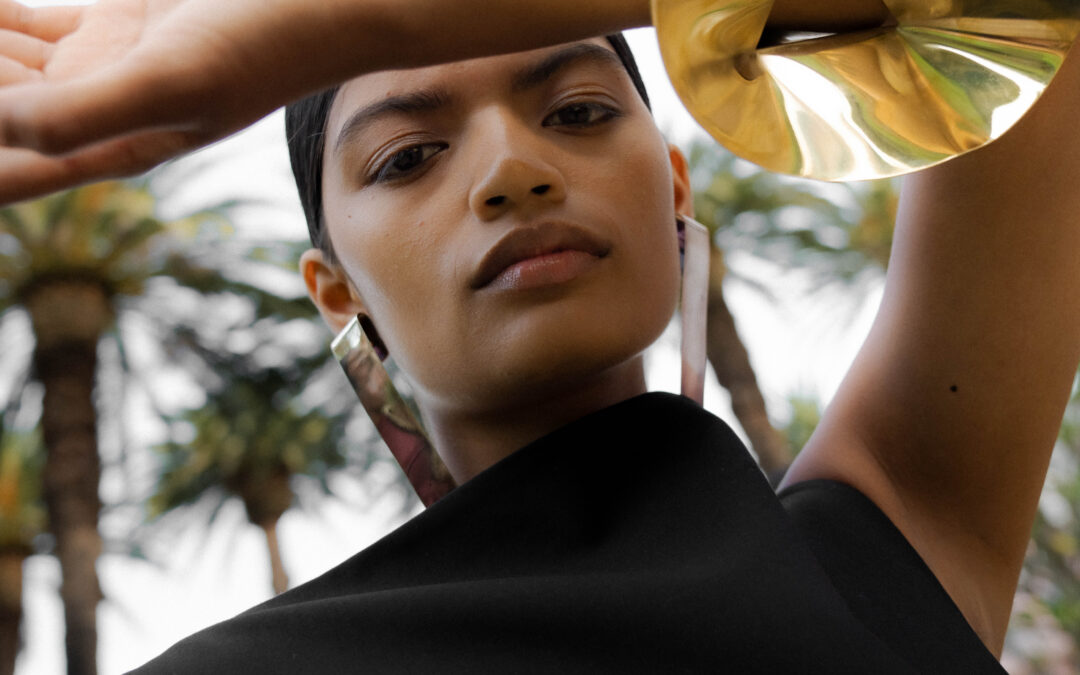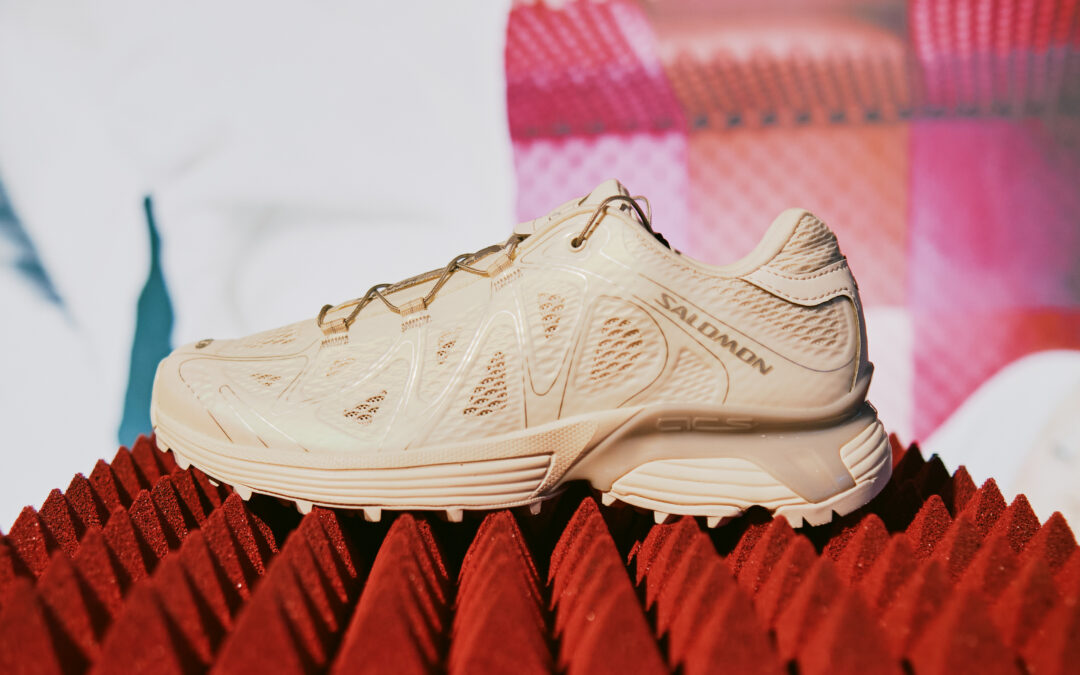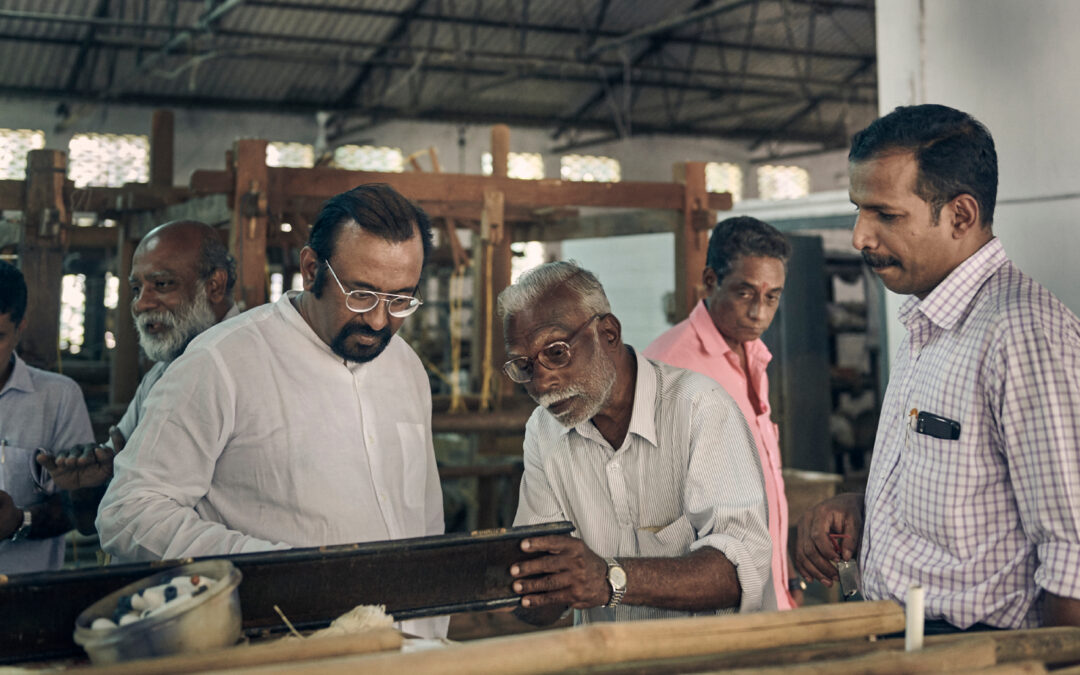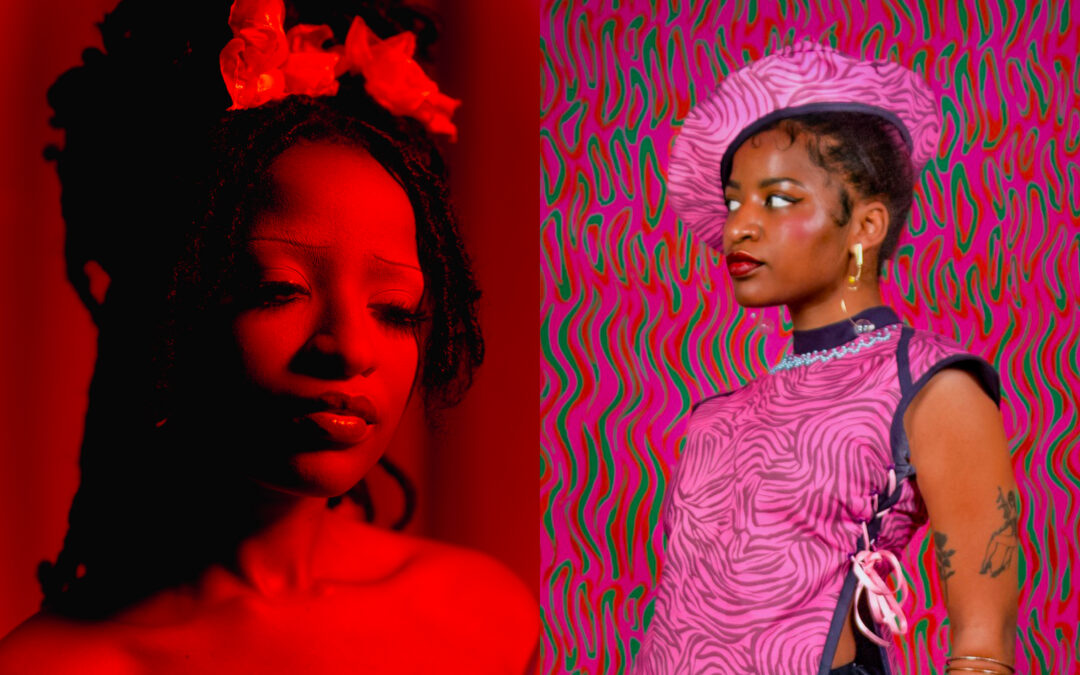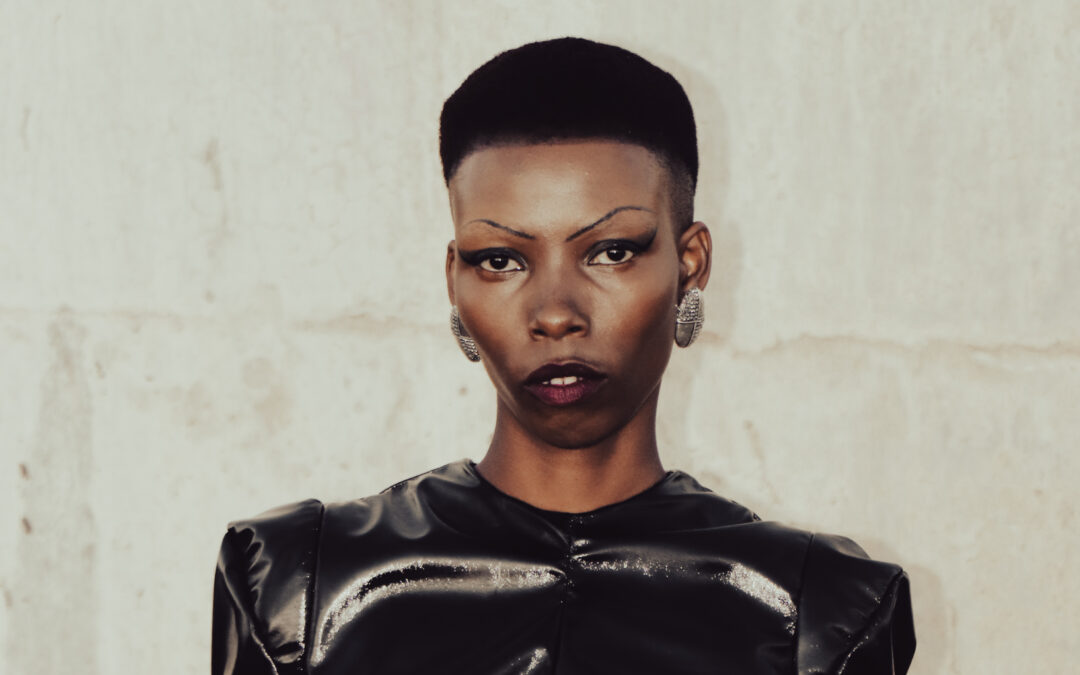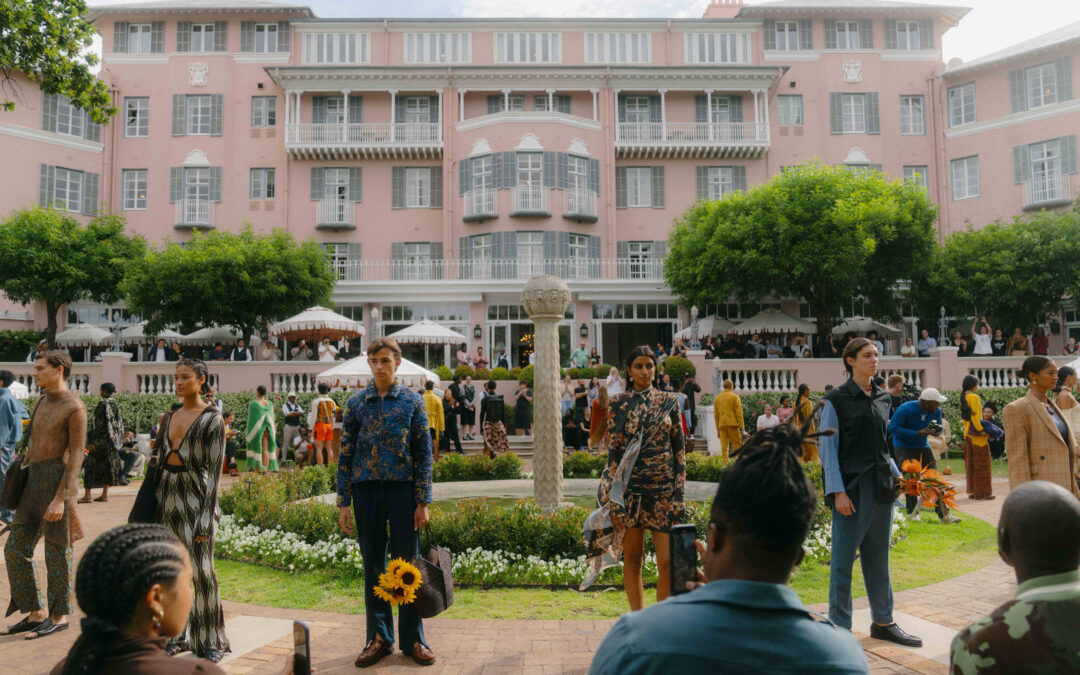In this month’s edition of Interlude, I thought we would go back to basics and approach fashion from the viewpoint of the stitch. This simple technique launched humanity into a new era of expression and environmental protection, thought to have originated during the Paleolithic era using bone needles and hide. This seemingly simple act that we rely on today has been updated through hyper-advanced sewing machines (my entry level Elna Explore has 22 stitches) alongside the movement of the hand-stitching, and it’s pretty wild to consider how new sewing machines are for us, as their invention and subsequent computerization have only been available since the 19th century. I really believe anyone who is interested in fashion should understand garment construction even in just an introductory way – my basic skills managed to get me through hard lockdown in 2020 when I created my apocalyptic up-cyling project, @hac_ansuz – and while many of the pieces are not very wearable, the idea behind it was to re-imagine my wardrobe as if shopping was a thing of the past, due to the breakdown of society, and what struck me was my previous disbelief in my own sewing skills was thoroughly challenged; surprising myself with the inventiveness of slashed hems and turning pant legs into sleeves. Not everyone who loves fashion is destined to be a designer – which I believe is something we should address in our fashion school system in SA – but we are definitely all creative, and sewing is as much an exploration of one’s own aesthetic identity as dressing & styling ourselves is. Without the needle piercing and looping through fabric, none of what we see occurring in fashion could take place, and while digitization continues (a chapter for another day), chapter 02 lays out some notable stitching of some South African creators that I believe are preserving the craft of local hand-making.


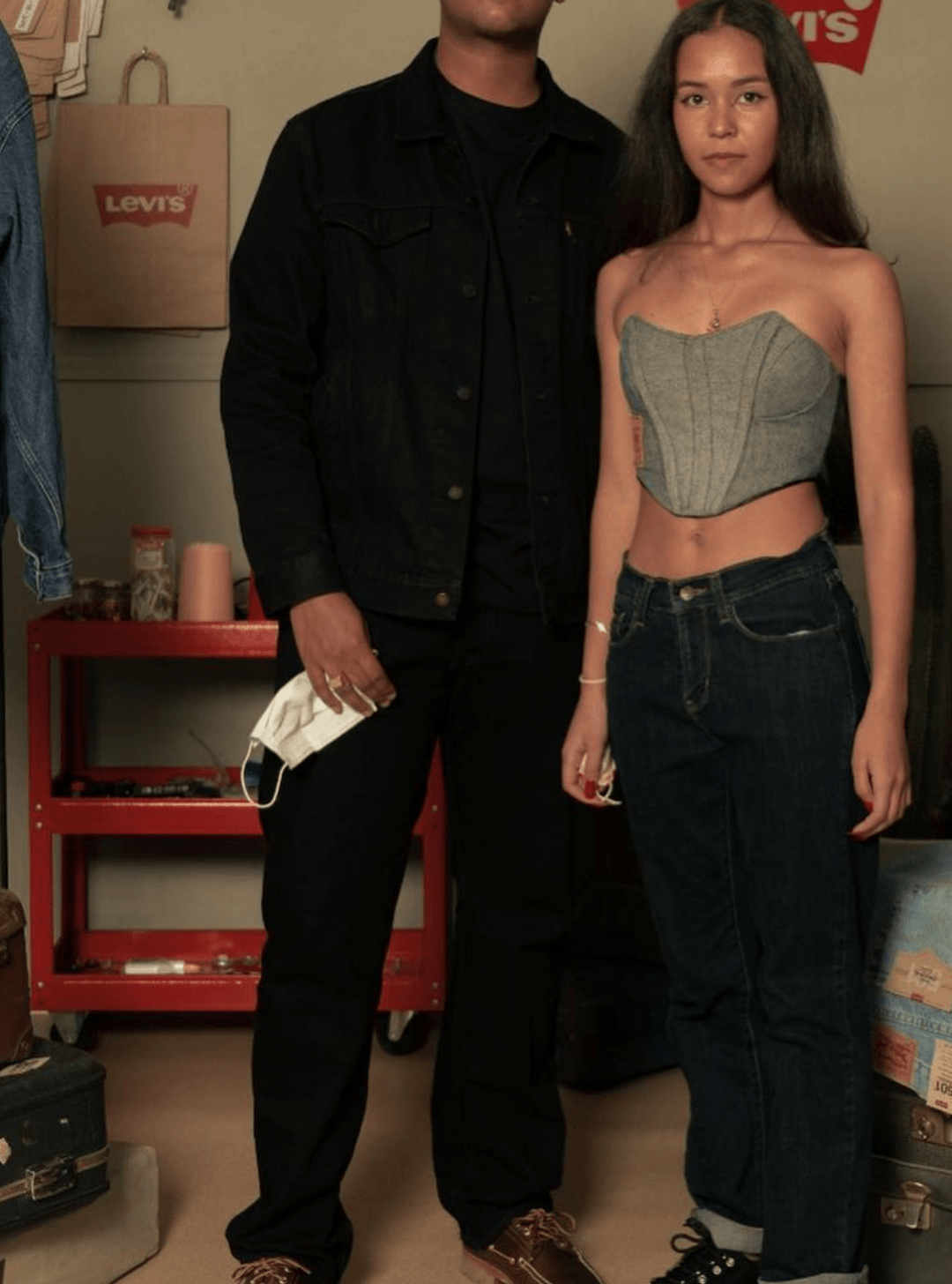
Sewing the Seams ///
There is a certain kind of patience and delicacy required for small batch runs of clothing or bags; envisioned for a community, and yet made well enough to be bought by said community. I am in awe of Sheefah Sity’s bags and purses via her page @sakkie.co – particularly the use of faux-fur (that reminds of our-mother-in-fur Lil Kim) and the checkerboard carriers; a technique, by the way, of stitching squares together rather painstakingly. These can be custom ordered and developed with Sheefah based on available fabrics and tones. Alex Kaczmarek is Cape Town’s foremost creator of belt-bags (an updated term in the most recent renaissance of the “fanny
pack”) and shows exceptional technical skills in stitching together all the nuanced inserts, zips and straps involved with bags – alongside her signature boiler suits and bucket hats. Recently, psych-student Laylah Sallie was invited to Levi’s Haus of Strauss for a workshop – and made the coolest panelled corset from a pair of 501s. A home-sewer, Laylah reminds me that sewing can very much be a treasured pastime and creative endeavour without it being monetized – although, if she were to drop an up-cycled collection, I’d be there in a heartbeat.
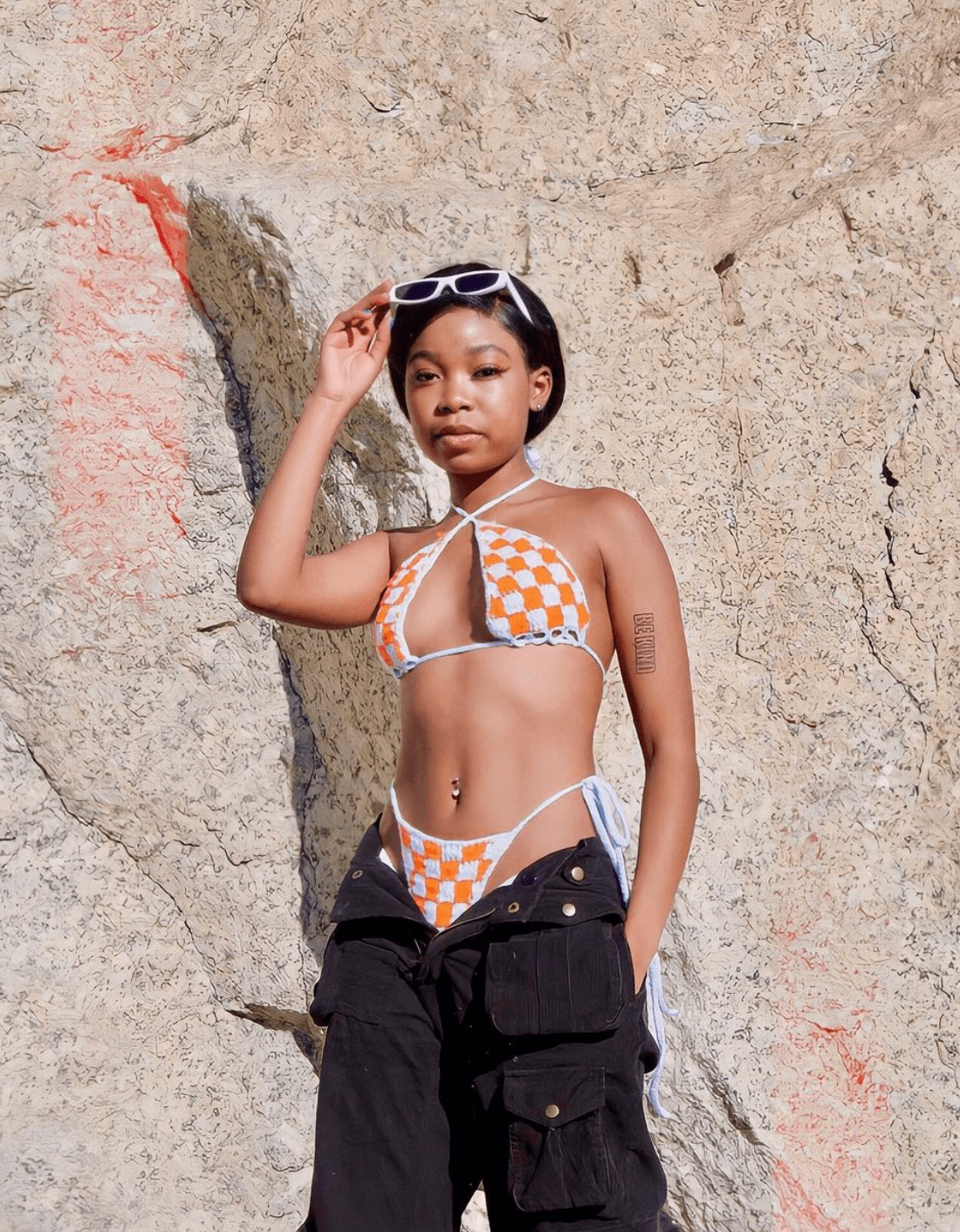
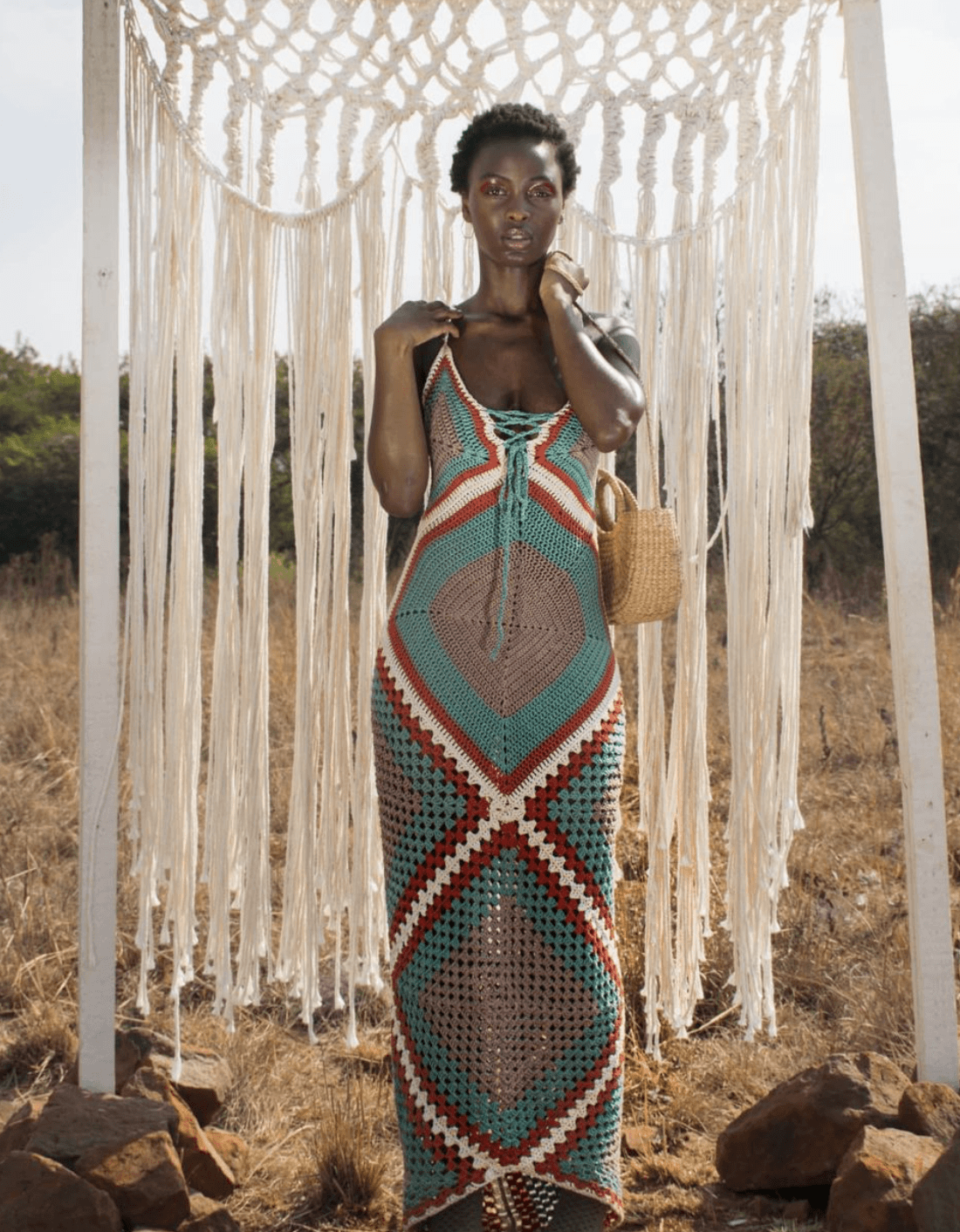
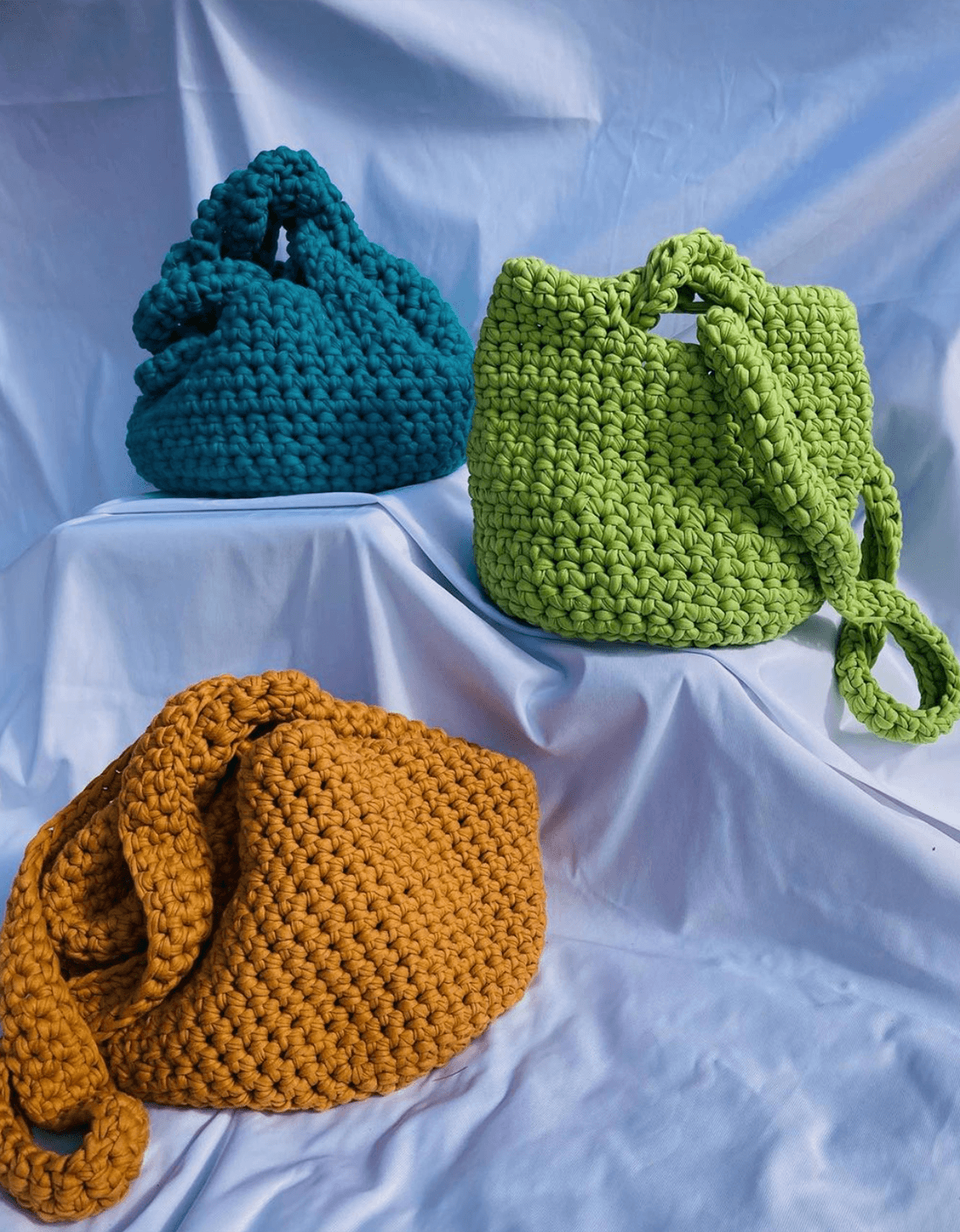
Slip Stitch of Crochet ///
Crochet seems like a magical power to me. I attempted it once, many years ago -and found it really difficult, although at the time I was very impatient about doing anything I would have to practice in order to be good at (oh, youth). As opposed to a production line in which a garment may go through the hands of many people – crochet cannot be done on a machine (unlike knit), as a machine is incapable of replicating the transverse chains attributed to crochet. So, if you see a crochet item in a fast-fashion retailer like Zara; please know it had to have been made in one sitting, by one person, who is definitely being exploited. I don’t like to ascribe dualistic morality to how we purchase in a capitalist society – it’s always a far more nuanced conversation around
accessibility and consumption – I do, however, feel strongly that one should always purchase crochet pieces from a local creator. My favourite crochet artists at the moment include Crochet Couture; their deliciously vivid chain-stitch bikinis, patchwork pants and sets are gorgeous and the brand oscillates between the earthy-sentiments often associated with crochet and super bright, maximal pieces. Tenele Zwane’s crochet label, @subtletdesigns, is dedicated to crochet as an act of longevity; each piece is handmade and showcases an incredible ability to create patterns with yarn. Cape Town’s own @wren_and_blue maximizes the width of the crochet hook with her beautifully knotted bags in all different shades; and all these designers do custom orders.

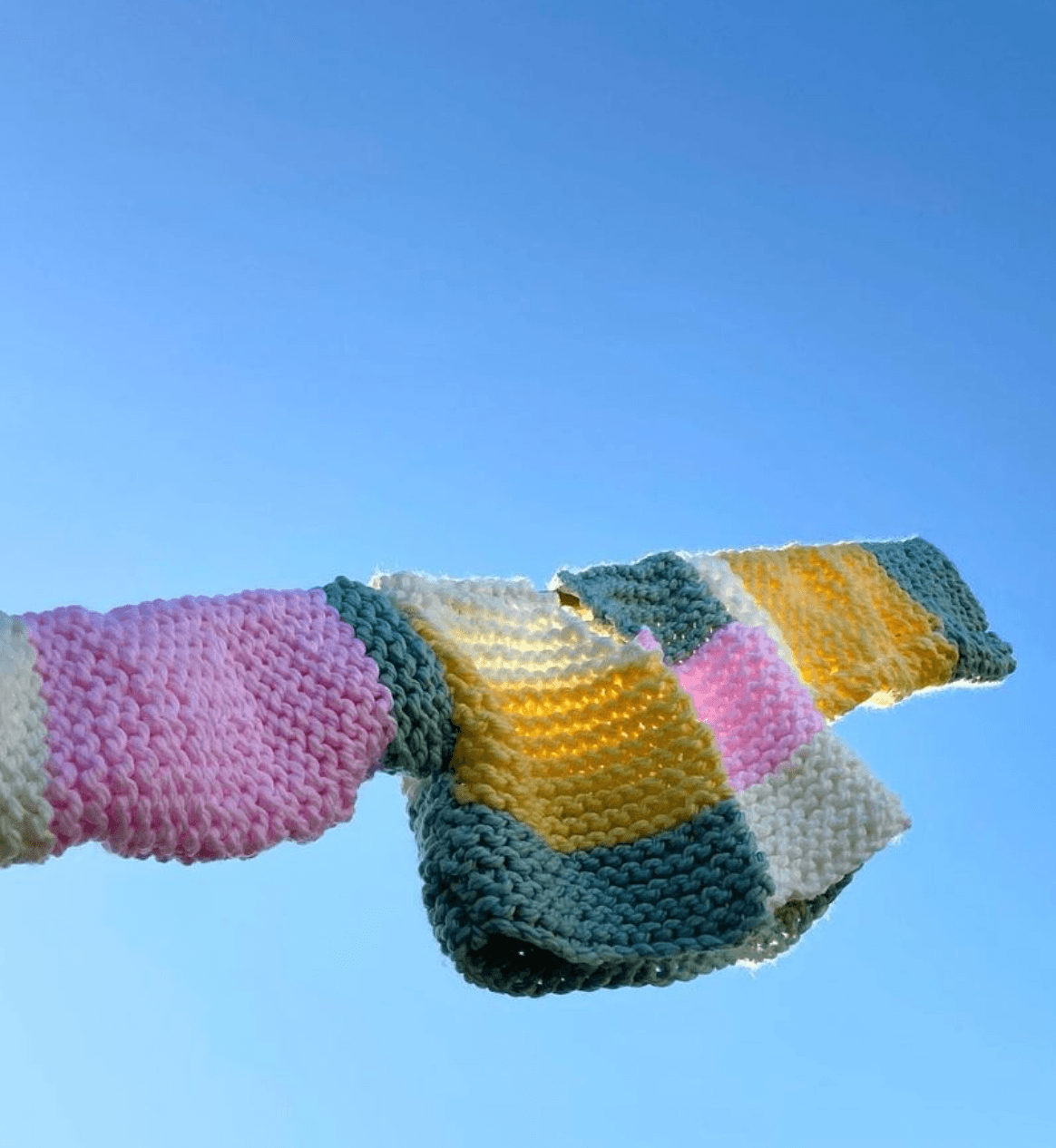
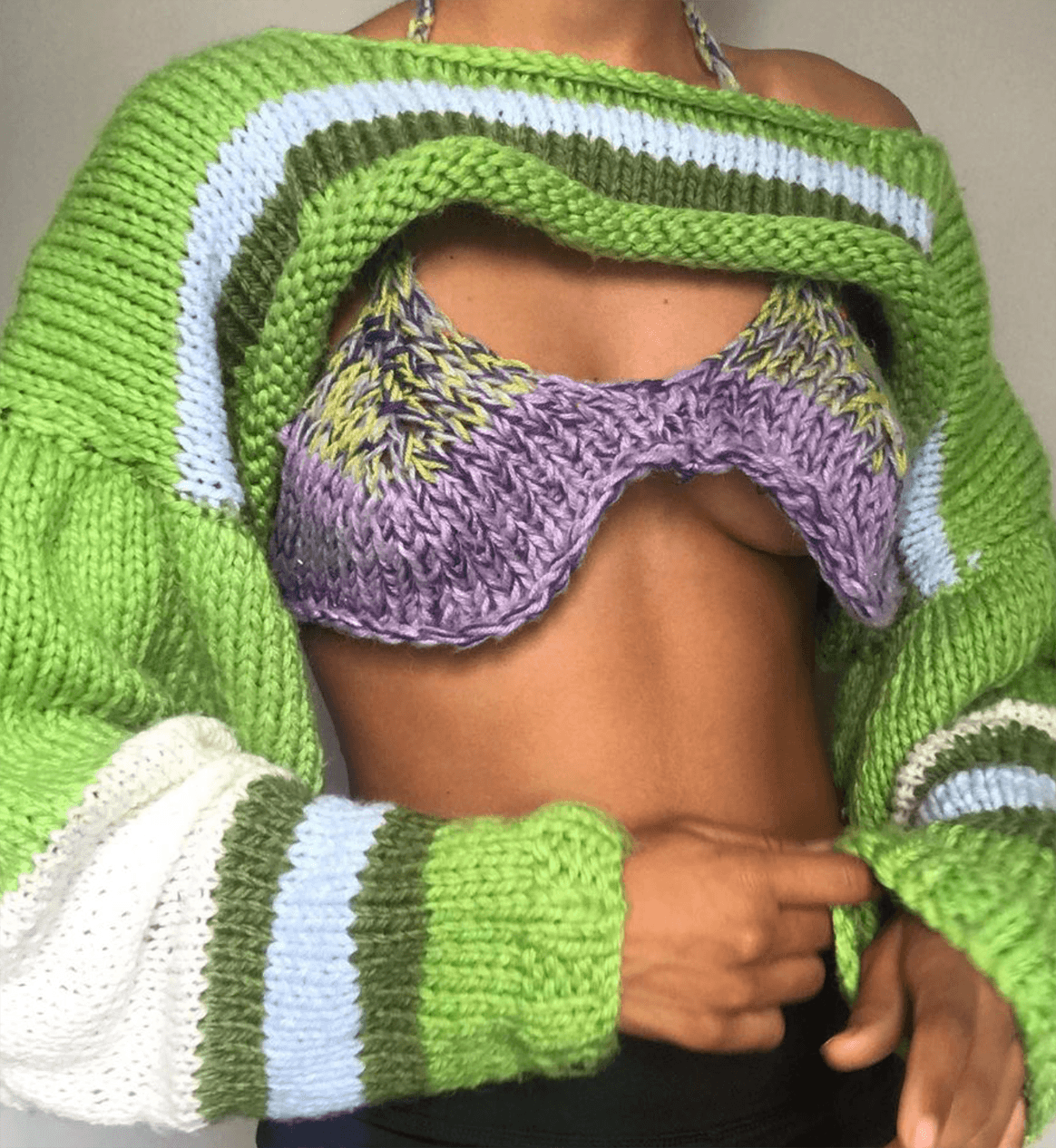
Knitting Nature ///
Last winter, artist Sphiwe Dliwayo (under his moniker @iamkeithvirgo) knitted a series of exaggerated Mbatha scarves – his own, refined iteration of the Lenny Kravitz blanket scarf moment from the early 2010s, along with snug hats in shades of black and stone grey – here’s to hoping Sphiwe will be taking orders in autumn; it feels crucial for AW22 in South Africa. CTFCD graduate Jessica-Ann Sheperd is an emerging designer and her label Oddity is another stitch-defying array of oversized cardigans; among them beautiful, pastel shades and organic browns; I look forward to
watching Jessica-Ann’s unfolding. Last, and certainly not least, @bambi.knits is designer Tarryn Tippens continued conversation using wool & yarn as a means to explore sustainability in her practice; using organic shapes and forms to create balaclavas, cropped jerseys and fairy-esque skirts and bras. Tarryn’s aesthetic makes sustainability feel incredibly thoughtful, particularly through the juxtaposition of her eco-dyed pieces against digital backgrounds depicting Mother Earth’s textures and terrains.



